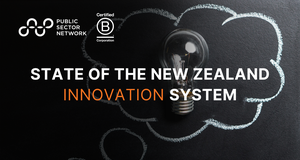Cust omer contact during COVID-19: Adapting to increased enquiry and service volumes

Joan Brierly
Director, Service Delivery, Driver and Vehicle Services
WA Department of Transport
At the recent Contact Centres event, we heard from Joan Brierly, Director, Service Delivery – Driver and Vehicle Services, Department of Transport WA as she explores customer contact during COVID-19 – adapting to increased enquiry and service volumes. In this article she explores:
- Leadership during times of pressure: how to get the best from your staff
- Rapidly reengineering operations to deal with increased volumes and urgency
Preparing for a crisis
In early March 2020 no one was quite prepared for how the world was about to change. Even when COVID-19 was declared a pandemic, most people didn’t realise how they would be affected or what it would mean. That was certainly the case for Joan Brierly , the Director of Service Delivery, Driver and Vehicle Services at the Department of Transport in WA . “I thought it would be over very quickly,” she said, but clearly that was not the case. On 15 March the Premier and Police Commissioner announced a state of emergency and a lockdown. That’s when “everything changed.”
In many ways, unlike much of the rest of the country, Western Australia has not suffered the effects of the pandemic in the same way. However, of all the government services that have been affected, it was largely the Department of Transport that was the most impacted. That might initially sound incongruous but being “a network of branches,” with a focus on transport infrastructure and logistics, the department has the “capability to scale up very quickly.” In fact, the WA Department of Transport has become the government’s go-to department “if there are any incidents.” As such, “overnight, our operations changed.”
The Department of Transport already had some of the busiest call centres in the state, with around “3,000 calls coming in everyday regarding licensing services.” But when the lockdown was first announced, knowing that they were the ‘go-to’ department, they received no direction from any government leaders about initiating any new contact centres. The department’s leaders even asked the Premier’s office but were told that “people will be able to find what they need though the online portal. How wrong they were.”
On a Friday a week or so later, the Police Commissioner called the department and actually said that a call centre might be useful. He said that the centre should use “Amazon web services, which we’ve never used it before, and that it should open on Monday morning. So we had 48 hours to build a new contact centre.” That meant setting everything up, making sure all of it worked, and finding a way to “conduct our existing business” as well. On Monday morning the Police Commissioner announced that a new contact centre was now open, “but it didn’t work.” There was a “firewall issue” that morning which was sorted “within about 2 hours.” But even once it got going, there were problems.
Adapting to changing
circumstances
Whilst the infrastructure was set up and “15 people” were assigned to the new centre, “we had no idea how many people we would need or how it would work.” So a “training plan, a sort of menu” was drawn up, as well as a file that was regularly added “with questions and answers.” It was very much a “fly-by- the-seat-of-our-pants approach, because we knew nothing.” With very little direction from the senior executive of the department, the people running the call centre decided to take things into their own hands and “set up a daily catch up every morning at 8am with every single manager in our branch network, our contact centre managers, our support managers, and also our regional managers.” The assumption was that “we didn’t know the answers but we’re all in this together” so everyone had a chance to ask questions which would be answered the following morning. The most important part of the process was that it was “really genuine, really vulnerable.” No one knew what they next day would bring, but working though it together made it “a really fantastic period.” Since metro and regional people were part of the process too, it created greater “connectivity” and when there was an outbreak in the city for example, “our regional colleagues were very quick to provide support for us, which didn’t actually happen before.”
The morning stand ups were instigated by those running the call centre, but “by the end of week one, our corporate executive joined the meeting.” Three weeks later, they “started the same model from a corporate executive perspective.” This then led to regularly meetings on Microsoft Teams “for the first time” across the department, and “we changed our operations completely.”
Across all the contact centres, “we had a 33% increase in calls,” but not all of them were about the pandemic or at the same time. Sometimes the COVID line was busy and other times it wasn’t. “So we pivoted our back office staff to be able to actually take the calls.” Many were issued pre-ordered laptops, and with extra training, were sent home. “That gave us capacity and they could just switch from doing back office work to doing front office work.” When needed “we actually have up to 75 people now who can take calls on the COVID line.” This capacity-driven model is still dominant across the department.
Coping with the pandemic
People from other states laugh at those in WA because the pandemic has barely affected them. But that is part of the point. “There’s been a huge emotional toll of not being connected to the world and to our families over east or overseas. People in WA have been very sheltered from the worst of COVID-19 as a benefit of our distance, but it weighs heavily” and many of the calls have been about that. Moreover, many of the people taking the calls have felt it too, so “we are working really closely with our people and developing our leadership in that emotional support area too.”
The leadership of the department has also changed. They are much more open to change, “are really dedicated,” and are much more resilient. To measure the leadership, the department uses the Barret Model [1] on a scale of 1 to 7. In a survey towards the end of 2020 “our leadership was at level five, but we want to be at six or seven, which is actually about being with our teams and working with our teams to provide that emotional support.”
Despite everything that has happened with the establishment and maintenance of the COVID line, the work of the rest of the department has continued too. For one thing, when there are few or no restrictions, “we still get 4,500 people visiting the nine metropolitan centres every single day,” and “we’ve had a 25% increase in our normal licensing business over the year as well.” On top of that, when the COVID line is at its busiest, “we have 75 staff taking 6,500 calls a day.” This is a huge surge and a huge load, but the department has coped and continues to do so.




















